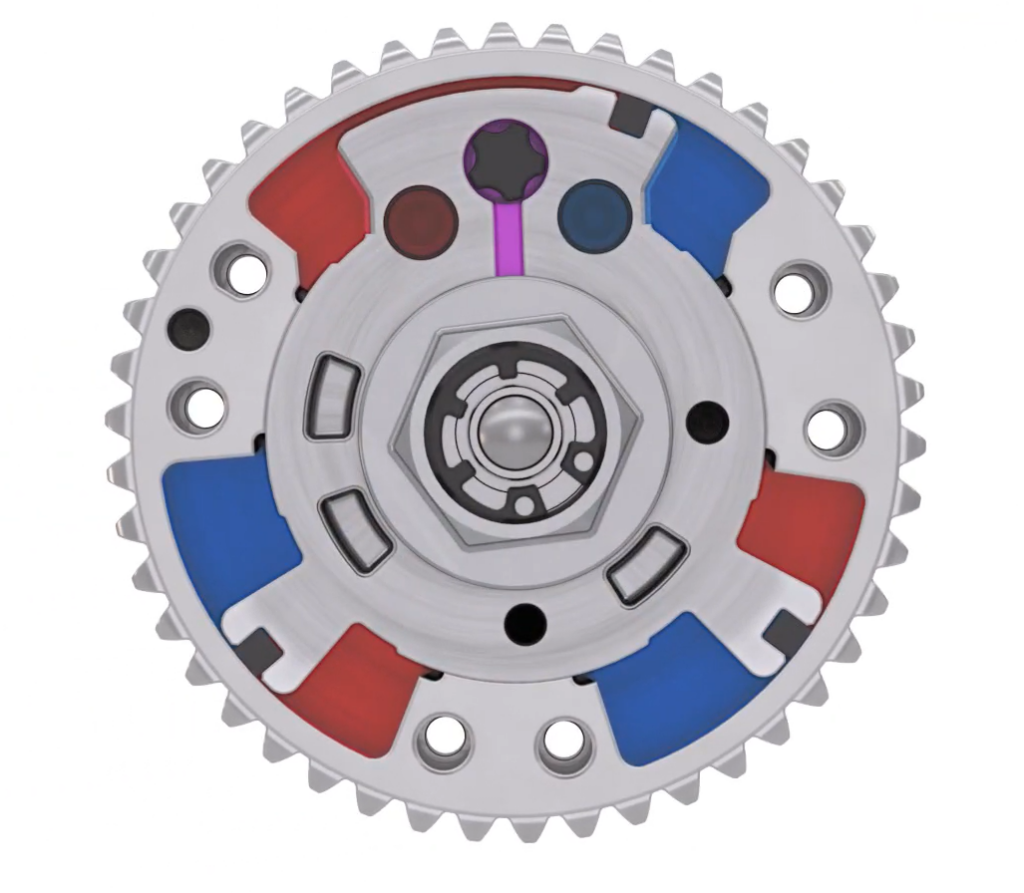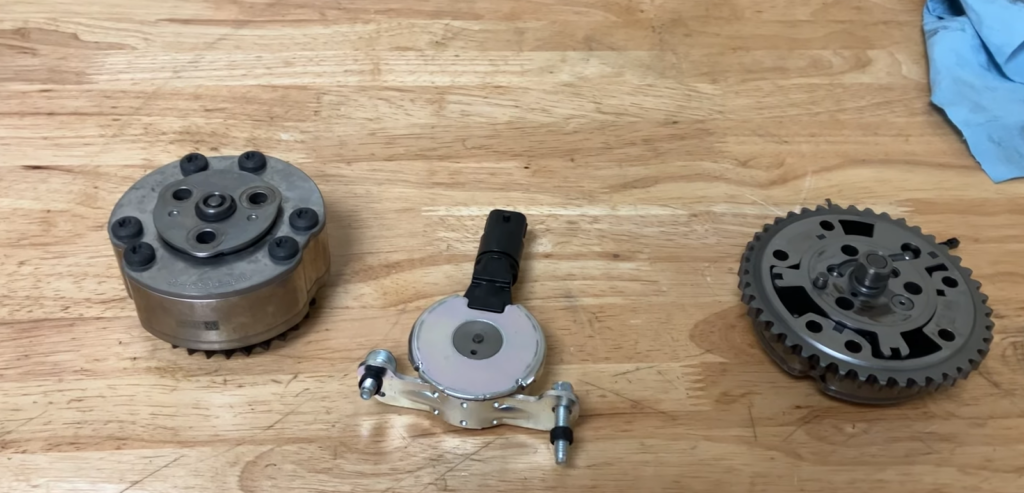
The Mechanic’s Handbook: What Are Cam Phasers?
Cam phasers have become a crucial component in many modern engines, yet few understand their intricate workings and importance. This guide is designed to shed light on the topic and help you grasp the concept of cam phasers, how they function, and their significance in vehicle performance and efficiency.
Table of Contents:
- Understanding Cam Phasers
- How Cam Phasers Work
- Importance of Cam Phasers in Engines
- Common Problems and Their Symptoms
- Conclusion
Understanding Cam Phasers
Cam phasers are integral components in the modern automotive world. As a type of variable valve timing (VVT) technology, they’re essential tools in the engineer’s kit to ensure optimal engine performance. Their primary function lies in their ability to adjust the timing of the camshaft. By doing this, they directly influence the opening and closing of the engine valves, a process pivotal to the engine’s overall functionality.
The benefits of cam phasers extend beyond just performance. They play a significant role in reducing harmful emissions that vehicles release into the environment. Simultaneously, they assist in enhancing fuel efficiency, making vehicles more economical in the long run. As the automotive industry continues to evolve, technologies like cam phasers demonstrate the innovative strides being made toward creating more efficient and environmentally friendly vehicles.
How Cam Phasers Work

Cam phasers function by using hydraulic pressure to rotate the camshaft slightly relative to its initial position. This rotation, which can be either advanced or retarded, is achieved through a few key components:
| Component | Description |
|---|---|
| Phaser Body | Directly attached to the camshaft. Can rotate slightly relative to the camshaft. |
| Rotor | Positioned inside the phaser body. Moves depending on the oil pressure provided. |
| Control Valve | Regulates the oil pressure. Determines whether the rotor (and camshaft) should advance or retard. |
The Engine Control Module (ECM) manages the whole process, using various sensors to determine the optimal camshaft position at any given time.
Cam phasers, an essential piece of modern engine technology, operate on a sophisticated mechanism driven primarily by hydraulic pressure. Their fundamental role is to allow slight rotation of the camshaft in relation to its initial stance, offering a fine-tuning capability crucial for optimal engine performance. This nuanced rotation can either progress (advance) or move backward (retard) based on a system of intricately connected components.
At the heart of the cam phaser is the Phaser Body, which is anchored directly to the camshaft. Though it’s rigidly attached, it’s designed to permit a modicum of rotational flexibility in response to varying conditions. Inside this body resides the Rotor. Acting almost like a pivot, the rotor’s movements are governed by the hydraulic oil pressure supplied to it, making it a crucial intermediary in the camshaft’s positional adjustments.
Furthermore, the system incorporates a Control Valve, which acts as the gatekeeper of this hydraulic orchestra. By modulating the oil pressure, this valve decides the rotor’s direction of movement – whether to advance or to retard the camshaft’s position. Such precise adjustments need a central command, and that’s where the Engine Control Module (ECM) steps in. Acting as the brain of the operation, the ECM collates data from a suite of sensors, continuously assessing and determining the ideal camshaft orientation for every driving scenario.
Importance of Cam Phasers in Engines

Cam phasers have emerged as one of the most crucial components in contemporary engine designs, and their importance cannot be overstated. These components have a multi-faceted impact on the overall operation and efficiency of engines:
- Optimized Performance: At the core of an engine’s power and responsiveness is its ability to breathe – to intake air and expel exhaust gases. Cam phasers play a pivotal role in this process. By finetuning the valve timings, these devices ensure that the engine can adjust its breathing pattern based on demand. This adaptability translates to enhanced power and torque, particularly in scenarios where rapid acceleration or increased power is necessary;
- Fuel Efficiency: As the global push towards environmental sustainability intensifies, fuel economy in vehicles has become a paramount concern. Cam phasers are at the forefront of addressing this challenge. By facilitating the engine’s ability to operate at its peak efficiency across a broad range of conditions, they not only ensure that every drop of fuel is used effectively but also contribute to cost savings for the vehicle owner;
- Reduced Emissions: Environmental concerns don’t stop at fuel economy. With growing awareness about the environmental impact of vehicular emissions, there’s been a concerted effort to reduce the pollutants released into the atmosphere. Cam phasers, by offering precise control over valve timings, ensure that the combustion process within the engine is as clean and efficient as possible. Efficient combustion means that fewer harmful byproducts are produced, resulting in a significant reduction in emissions.
Common Problems and Their Symptoms
Cam phasers, as intricate as they are essential, are not immune to wear and tear or occasional malfunctioning. Being aware of potential problems and understanding their symptoms can be instrumental in preventing extensive damage and ensuring the prolonged health of the engine.
- Noise: One of the most immediate and noticeable symptoms of a cam phaser starting to go awry is a distinct change in engine noise. The engine might produce an unsettling rattling or ticking sound, most pronounced during the startup phase. This sound can be indicative of the cam phaser struggling to make necessary adjustments due to wear or damage;
- Reduced Engine Performance: As the cam phaser is central to optimizing the engine’s performance, any malfunction can have a direct impact on how the engine feels and responds. A compromised cam phaser might manifest as a tangible reduction in engine power, a sluggish throttle response, or even occasional hesitation during acceleration. Such discrepancies in performance often stem from the cam phaser’s inability to adjust valve timings accurately;
- Check Engine Light: Modern vehicles are equipped with a range of sensors and diagnostic systems. A malfunctioning cam phaser can create timing discrepancies that the onboard computer detects. As a result, drivers might notice the dreaded check engine light illuminating on their dashboards, signaling that something is amiss within the engine’s operational parameters;
- Poor Fuel Economy: At the heart of the cam phaser’s function is ensuring optimal valve timings, directly influencing the engine’s fuel efficiency. If the Variable Valve Timing (VVT) system, which relies on the cam phaser, begins to falter, there can be a noticeable increase in fuel consumption. Drivers might find themselves visiting the fuel station more frequently, even if their driving habits haven’t changed.
Conclusion
Cam phasers, though a small component in the grand scheme of engine mechanics, play a significant role in modern engines’ efficiency and performance. Understanding their function not only gives insight into the marvel of automotive engineering but also helps in diagnosing potential issues early. As with all vehicle components, regular maintenance, and timely repairs can ensure that cam phasers function effectively for a long time.